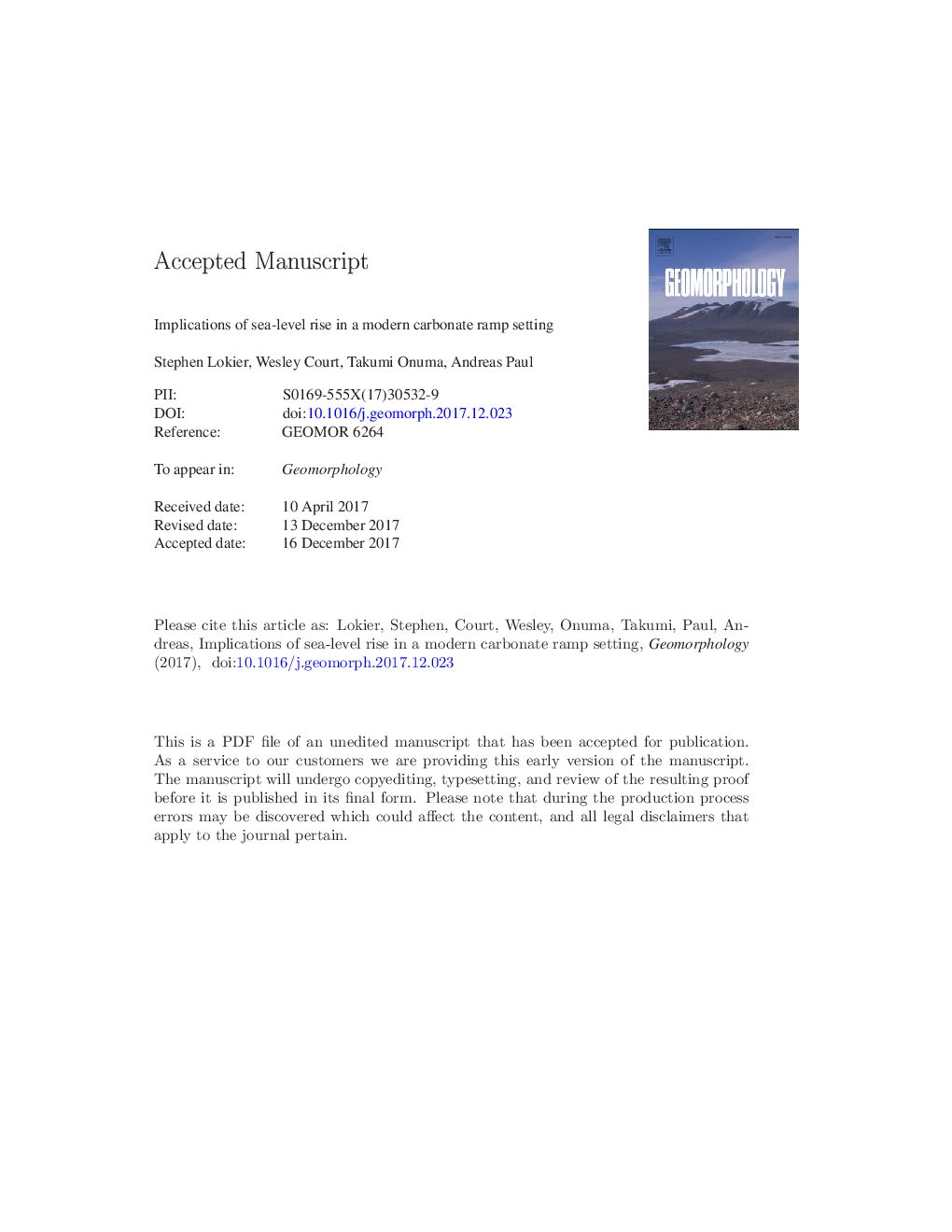| کد مقاله | کد نشریه | سال انتشار | مقاله انگلیسی | نسخه تمام متن |
|---|---|---|---|---|
| 8908180 | 1635346 | 2018 | 31 صفحه PDF | دانلود رایگان |
عنوان انگلیسی مقاله ISI
Implications of sea-level rise in a modern carbonate ramp setting
ترجمه فارسی عنوان
اثرات افزایش سطح دریا در یک محدوده رمپ کربناته مدرن
دانلود مقاله + سفارش ترجمه
دانلود مقاله ISI انگلیسی
رایگان برای ایرانیان
کلمات کلیدی
سطح دریا، تجاوز، رمپ کربنات، فرسایش ساحلی، خلیج فارس،
موضوعات مرتبط
مهندسی و علوم پایه
علوم زمین و سیارات
فرآیندهای سطح زمین
چکیده انگلیسی
This study addresses a gap in our understanding of the effects of sea-level rise on the sedimentary systems and morphological development of recent and ancient carbonate ramp settings. Many ancient carbonate sequences are interpreted as having been deposited in carbonate ramp settings. These settings are poorly-represented in the Recent. The study documents the present-day transgressive flooding of the Abu Dhabi coastline at the southern shoreline of the Arabian/Persian Gulf, a carbonate ramp depositional system that is widely employed as a Recent analogue for numerous ancient carbonate systems. Fourteen years of field-based observations are integrated with historical and recent high-resolution satellite imagery in order to document and assess the onset of flooding. Predicted rates of transgression (i.e. landward movement of the shoreline) of 2.5 m yrâ 1 (± 0.2 m yrâ 1) based on global sea-level rise alone were far exceeded by the flooding rate calculated from the back-stepping of coastal features (10-29 m yrâ 1). This discrepancy results from the dynamic nature of the flooding with increased water depth exposing the coastline to increased erosion and, thereby, enhancing back-stepping. A non-accretionary transgressive shoreline trajectory results from relatively rapid sea-level rise coupled with a low-angle ramp geometry and a paucity of sediments. The flooding is represented by the landward migration of facies belts, a range of erosive features and the onset of bioturbation. Employing Intergovernmental Panel on Climate Change (Church et al., 2013) predictions for 21st century sea-level rise, and allowing for the post-flooding lag time that is typical for the start-up of carbonate factories, it is calculated that the coastline will continue to retrograde for the foreseeable future. Total passive flooding (without considering feedback in the modification of the shoreline) by the year 2100 is calculated to likely be between 340 and 571 m with a flooding rate of 3.40-8.64 m yrâ 1. However, adopting the observation that global sea-level rise only accounts for 15% of the recorded shoreline retreat, this figure rises dramatically to a total likely dynamic flooding (considering modifications to the shoreline) of between 2.3 and 3.8 km. Loss of microbial and mangal habitats will subject the exposed shoreline to increasing erosion. Shoreline retreat will threaten existing coastal infrastructure.
ناشر
Database: Elsevier - ScienceDirect (ساینس دایرکت)
Journal: Geomorphology - Volume 304, 1 March 2018, Pages 64-73
Journal: Geomorphology - Volume 304, 1 March 2018, Pages 64-73
نویسندگان
Stephen W. Lokier, Wesley M. Court, Takumi Onuma, Andreas Paul,
